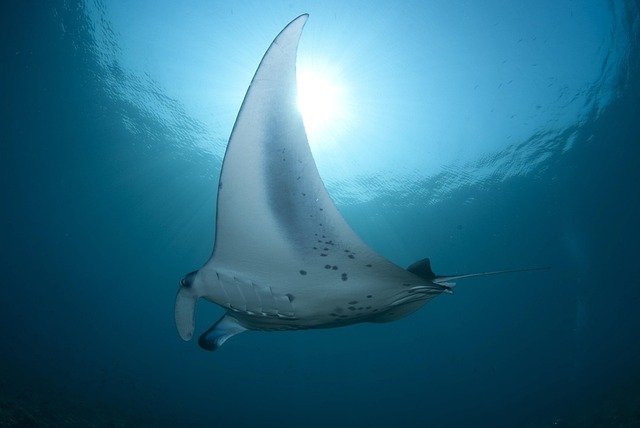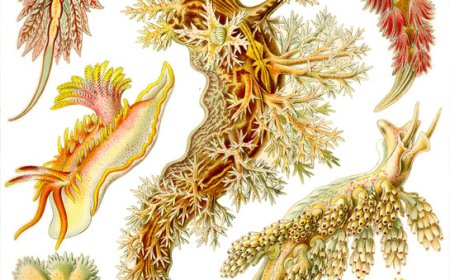Manta Ray Facts for Kids – Graceful Gliders of the Sea
Explore manta rays for kids. Learn how these gentle giants swim, what they eat, and fun facts about their ocean habitats.

🪸 Manta Rays: Graceful Gliders of the Sea
Manta rays are some of the most beautiful and peaceful creatures in the ocean. With their wide, wing-like fins and gentle movements, they seem to fly through the water. These are the largest of all rays and, unlike stingrays, they don’t have a stinger—so there’s no need to fear them!
Like whale sharks, manta rays are filter feeders that eat some of the smallest creatures in the sea. They are smart, social, and play an important role in the marine ecosystem. There are two main species: the reef manta ray (Mobula alfredi) and the giant oceanic manta ray (Mobula birostris).
🌍 Habitat and Geographic Range
Manta rays live in warm, tropical and subtropical oceans worldwide. They are found:
- Near coral reefs and coastlines (reef mantas)
- In the open ocean (giant oceanic mantas)
- Around cleaning stations, where small fish remove parasites from their skin and gills
Common hotspots include Maldives, Indonesia, Hawaii, Australia, Mexico, and the Galápagos Islands. Some migrate long distances to follow plankton blooms or find warmer waters.
🦐 Diet and Feeding Behavior
Manta rays are filter feeders. Their diet includes:
- Plankton
- Tiny crustaceans
- Small fish eggs and larvae
They feed by:
- Ram feeding – swimming with mouths open to scoop up food
- Somersault feeding – performing underwater flips to stay in dense plankton clouds
Despite wingspans up to 23 feet, their throats are small, so they can’t eat large prey.
🧥 Physical Features and Adaptations
Manta rays have skeletons of cartilage and are perfectly built for ocean life:
- Wide, flat bodies with long pectoral “wings”
- Cephalic lobes—the head fins that guide food into the mouth
- Gills on their undersides for breathing
- Spotted bellies used by scientists to identify individuals
- Large brains—the biggest of any fish
Unlike stingrays, mantas have no stinger; they rely on size and speed to stay safe.
👥 Behavior and Intelligence
Manta rays are known for being:
- Gentle and curious
- Social, often swimming in schools
- Playful, sometimes breaching the surface
- Intelligent, showing signs of problem-solving and memory
They frequent “cleaning stations” where cleaner fish remove parasites, often returning to the same spots year after year. Some may even recognize themselves in mirrors—a rare sign of self-awareness.
🍼 Life Cycle and Reproduction
Manta rays reproduce slowly, making them vulnerable:
- Ovoviviparous—eggs hatch inside the mother
- She gives birth to one pup at a time
- Pups are born fully formed, around 3–5 feet wide
Calves stay near their mother for protection. Mantas mature at 8–10 years and may live 40–50 years or more. Because they have few offspring, population recovery is slow.
⚠️ Threats and Conservation
Manta rays are listed as Vulnerable by the IUCN, with some populations Endangered. Main threats:
- Fishing for gill plates
- Bycatch in nets and lines
- Pollution—plastic, oil, toxins
- Climate change—altered plankton blooms
- Unregulated tourism—crowding and touching
Conservation efforts include marine protected areas, fishing bans, international agreements (CITES), photo-ID tracking, and eco-tourism guidelines.
🎉 Fun Facts About Manta Rays
- They have the biggest brains of any fish
- They can jump out of the water like dolphins
- Each has a unique belly pattern—like a fingerprint
- They use cephalic lobes to guide plankton into their mouths
- “Manta” means “blanket” in Spanish
🧠 Vocabulary List
- Filter feeder – strains tiny food from water
- Cephalic lobes – head flaps that guide food
- Cartilage – flexible tissue forming their skeleton
- Gill plates – filters for breathing and feeding
- Ovoviviparous – live birth from eggs hatched inside
- Bycatch – animals caught unintentionally
- Sanctuary – protected wildlife area
- Breach – leap out of the water
- Self-awareness – recognizing oneself as an individual
- Plankton – tiny floating sea creatures
✅ Manta Ray Quiz: Soaring Through Science
1. What do manta rays eat?
A. Fish and squid
B. Seagrass
C. Plankton and tiny sea creatures
D. Coral
Answer: C. Plankton and tiny sea creatures
2. Do manta rays have stingers?
A. Yes, like stingrays
B. No, they are harmless
C. Only when young
D. Only in deep water
Answer: B. No, they are harmless
3. What helps manta rays guide food into their mouths?
A. Their tail
B. Their teeth
C. Their cephalic lobes
D. Their eyelids
Answer: C. Their cephalic lobes
4. Why are manta rays at risk?
A. They eat too much
B. They swim too fast
C. They reproduce slowly and are hunted for gill plates
D. They are too big
Answer: C. They reproduce slowly and are hunted for gill plates
5. What is a group of manta rays called?
A. Pack
B. Pod
C. School
D. Squad
Answer: C. School
🧒 Kid-Friendly Summary
Manta rays are giant, gentle ocean animals that look like they’re flying underwater. They eat tiny plankton and glide through warm seas using their big wing-like fins. Mantas don’t sting and are very smart and peaceful.
Some manta rays are in danger from fishing and pollution, but people worldwide are working to protect these amazing gliders so they can keep soaring through the ocean.



















































